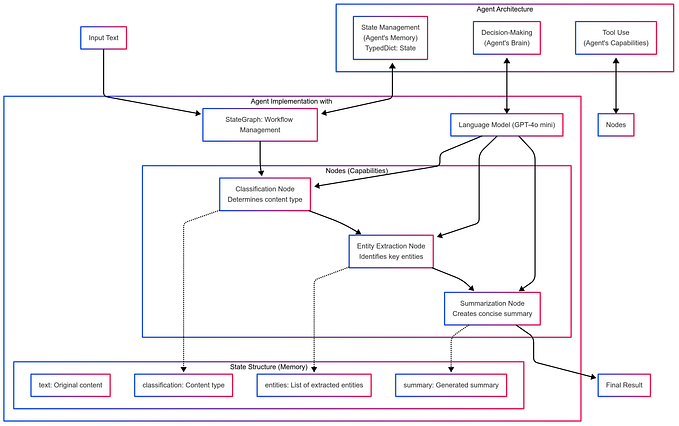The New Guardian of the Jungle | Machine Learning Securing Wildlife

Do you know how many tigers are left on planet?
Today, there are only about 3,900 tigers are left. one twentieth of the population, 100 years ago. 3 out of 9 tiger subspecies are already extinct.
Poaching is considered a major Drive in Tigers’ population drop.Under the threat of Poaching the population of many key species is declining at an alarming rate.
It has devastating consequences for wildlife. such species declines can destroy ecosystem and economies that depend on them. In some instances, it’s the primary reason why an animal faces a risk of extinction. This is the case with the African elephant, more than 100,000 of which were killed between 2014 and 2017 for ivory. Poaching has also had a catastrophic impact on rhinos, with more than a thousand slaughtered a year for their horns.
Is their any Solution ??
Yes, We have…
Ever since we started chalking out wildlife and biodiversity parks for the wildlife to sustain and flourish, we have had to fight poachers. It’s a problem that is not efficient tackled by regular patrols or efficient policing of the area and regular patrols by limited personnel have a pattern that is most often capitalized upon by poachers. so petrols need to be carefully planned.
Hence, now the “Gods of the Jungle” have put their faith in new guardian.I am not referring to Tarzan or George of the jungle.Hhhhhh..

This hero is more than Phantom-esqe.One who has a thousand eyes and a thousand ears.One who can never be found, but finds you. Here we are with :
MACHINE LEARNING: THE NEW GUARDIAN OF JUNGLE….

How Machine Learning can be implemented to conserve Wildlife??

Here we go…
PAWS : A ML and AI based Program —
PAWS : “Protection Asistente for Wildlife Security” is a predictive AI software that is helping counter the poachers Developed by the “USC Viterbi School of Engineering’s” Center for Artificial Intelligence in Society .Since its initial testing, PAWS has been coupled with SMART : “spatial monitoring and reporting tool”, they collect data from rangers patrols,poachers movement and trap locations.With the help of machine learning , they predict poaching hotspots and devise better routes.



How Paws Work ??
- PAWS takes basic information about the protected area and information about previous patrolling(work as historical data) and poaching activities as input, and generates patrol routes as output.
- As the patrollers execute the patrol routes, more poaching data will be collected, and feed back to PAWS. The core algorithm of PAWS integrates learning poachers’ behavior model, game-theoretic reasoning and route planning. More specifically, PAWS learns the behavior models of the poachers from the crime data collected.

- Based on the poachers’ behavior model, PAWS calculates a randomized patrolling strategy, in the form of a set of patrol routes and the probabilities of taking each route. PAWS then suggests patrol routes sampled from this strategy to the patrollers.
Learning Poacher’s Behaviour Model: —

- As we see above One key part of PAWS is to learn poachers behaviour model, based on the animal distribution information of the protected area .It analyze how the patrol frequency would impact the poachers behaviour .
- It built a mathematical model called as SUQR to explain poachers behaviour and learn the parameters of model from real world data. It further enhance model through conducting human subject experiment using design a ranger -poacher game.
Ranger-Poacher Game : Game-theoretic Reasoning

- This game abstracting a real world problem and human subject as well as domain experts playing the game.
- With the learned model, rangers are able to find the poaching activity hotspots and more importantly they can predict how those hotpots changes if the different patrol strategy is deployed.

- This enables the game theoretic reasoning that is, in designing the patrol strategy they not only want to hit the current poaching hotspot but also need to consider how would the poachers react and adapt to the new patrol strategy. we can use computational game theory to complete this complex task: to applied for limited resource allocation.
Route Planning
- Another complex part to deal with, complex terrain on the ground. PAWS can build a virtual street map from the topographical information with this street map Paws is able to plan detailed patrol routes that are compatible with the terrain .

Thus, Integrating poacher’s behaviour model, game theoretic behaviour and route planning, PAWS generates a efficient patrol routes for wildlife protection.
- Microsoft has helped take PAWS to Azure, It’s cloud computing service , which helps PAWS be more accessible and scalable.That’s a lot of data to get your,well ,PAWS on.Add to this , cameras enabled for object identification using vision kits , and PAWS become almost omnipresent.
Results : —
- It was first tested in Uganda’s Queen Elizabeth National Park and Murchison Falls in 2016.

- The software immediately found and identified areas with infrequent patrols.Upon a newly scheduled visit,the rangers found scores of traps and snares.PAWS was already predicting hotspots for poachers that were intuitively missed by rangers. PAWS use all of the collected data to intelligently randomize ranger patrols.There are no patrols pattern to exploit anymore,thus leaving poachers nonplussed. It also helps detect areas of increased poaching activities.
- Since,its deployment in Cambodia , the rangers have been twice as effective on their patrols.So much so, that poaching activities are on decline wherever PAWS has been implemented.More traps and snares have been unearthed,and more poachers have met with failure.

The new guardian of the jungle : ML is living to its name…
OTHERS:
I took here one example oF program that is using ML and AI for wildlife conservation that is help to stop poaching. we have a lot’s of example where ML can be used to protect our ecosystem.
For example:
- Image recognition technology in particular has come to play a valuable role in wildlife conservation, where endangered species are tallied and tracked so their numbers and migrations can be more accurately measured and understood.
- DeepMind, the UK-based AI company that created AlphaGo, is using machine learning to detect and count animals, using millions of pictures taken in the Serengeti National Park in Tanzania.
- The Conservation X Project’s “ChimpFace” tags chimpanzees in photos on social media and e-commerce websites to help detect potential wildlife trafficking. The model reduces the time spent by humans monitoring online wildlife trafficking activities
- San Francisco based nonprofit Rainforest Connection is using tech to fight poaching.
In today’s era ML is using in almost every field to solve problems which can not be solved by humans… and at the end ML works according to our expectations…
Thank you for scrolling…
Always Happy for your suggestions.. :-)
Reference : To write this blog, I took help from multiple resources,That is why I am not mentioning them here.








